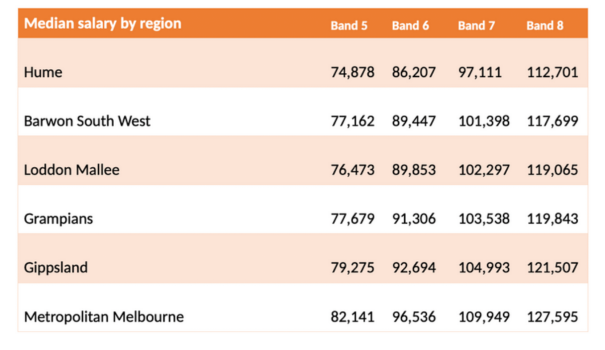
Regional councils might not be able compete with metropolitan operations when it comes to staff salaries, but they do have another recruitment drawcard up their sleeve that major councils don’t, a new report shows.

The report by public sector recruitment consultants Planned Resources analyses salary differences between 76 regional and metropolitan councils, compared against house prices, and ranks them to see which councils come out on top.
The report, Salaries and Housing Affordability: How do Victorian councils compare, suggests that regional councils’ inability to offer bigger pay packets may be offset by the fact that home ownership in the area is easier to achieve.
“Promoting affordability earlier in the process, especially at the advertising stage, has the potential to increase the pool of candidates,” the report concludes.
Differences in pay scale
Not surprisingly, the report finds a significant gap in pay scales for average council employees (Bands 5-8) between regional and metropolitan councils.
For example, a Band 5 employee in the Hume region is paid a median of $74.9 compared to their counterpart in metro Melbourne, who is on a median of just over $82,000. A Band 8 employee in the same region gets $112.7 compared to $127.6 in Melbourne.

However, the report also also shows that median three bedroom house prices vary by $2.17M between the suburbs tested.
“This figure far outweighs the $21k difference between salaries for an ‘average employee’ employed at the highest and least paying councils across Victoria,” it says.
In practical terms, that means it can take about three times the annual salary of a Band 5-8 regional employee to buy a house in a regional area, compared to employees at a major council where it could take up to 24 years’ worth of pay.
A regional salary to housing ratio analysis (house price divied by salary) showed councils in the Grampians and Loddon Mallee scored best when comparing salaries to local housing prices, while La Trobe (Gippsland), Southern Grampians (Barwon southwest), and Moira Shire (Hume) lead their respective regions in housing affordability.
Metro councils ranked lower due to the impacts of higher house prices.
An analysis of housing prices against individual council salaries saw Yarriambiack Shire Council in north-western Victoria ranked number 1, followed by Hindmarsh and West Wimmera.
Property purchasing power
Planned Resources Business Manager and Executive Recruiter Cindy Tran says while metropolitan councils pay higher salaries for bands 5-8, rent and housing is cheaper in regional areas, potentially making these areas more attractive for prospective employees.
“In general we found that in the current climate there are a lot of regional councils that can actually compete in the talent acquisition strategy by promoting this affordability factor to draw talent,” Ms Tran told Government News.
Of course we do advise people to look at broader career considerations including development and learnging opportunities as well,” she adds.
We found that in the current climate there are a lot of regional councils that can actually compete in the talent acquisition strategy by promoting this affordability factor to draw talent.
Cindy Tran
Meanwhile, councils where housing or rent is more expensive could consider providing short term accommodation support as an employee incentive.
When it came to rental prices, regional councils also scored well when comparing rent-to-net income ratio for employees across bands 5-8, with Melton and Wyndham councils scoring well for the metropolitan cohort.
Commute times
Commuting time is also an important factor, the report shows, because it adds unpaid hours to the working week, thus reducing the per hour salary.
Councils that have higher employee commute times – generally those in metro areas – could do well by promoting flexible work policies and staggered starting times as a strategy to attract and retain staff, Ms Tran says.
“We provide some suggestions in terms of how councils can look into work-from-home or flexibility policies, and use that to attract talent instead of affordability,” she said.
The findings contain vauable pointers for any council struggling to find staff, the report concludes.
“Links to real estate websites could be included in application packs along with local attraction information, travel times to Melbourne or regional centres, local schools, as well as basic property information such as median house prices and rental options is recommended to help attract more interest in the role, resulting in a higher application rate,” it says.
“For metro councils, housing prices and rental costs are less of a focal point to gross salary and commute times. Considering what material impact those commute times will have on salaries is likely to help attract talent from further afield.
“Highly promotable flexible work policies are also likely to be essential in attracting and retaining staff in these instances.”
Comment below to have your say on this story.
If you have a news story or tip-off, get in touch at editorial@governmentnews.com.au.
Sign up to the Government News newsletter
